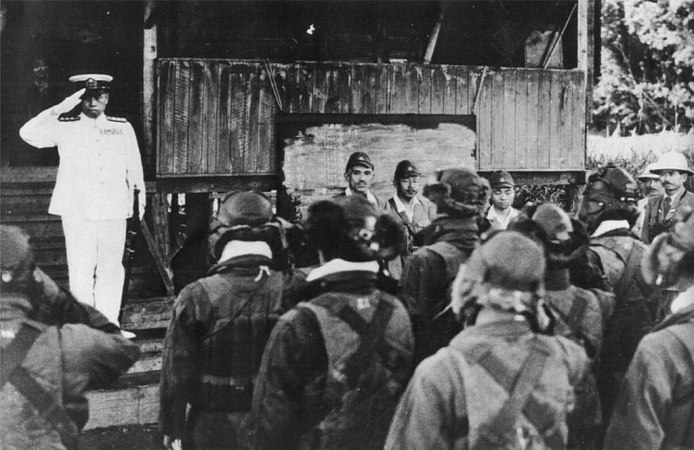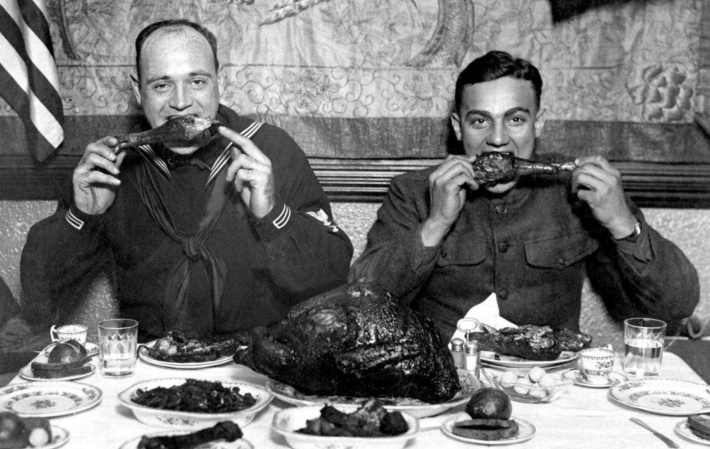The new trailer for Godzilla: King of Monsters came out and, like other Godzilla movies of the last twenty years, it has one fundamental mistake: it has nothing to do with the extensive lore behind Godzilla and the large cast of supporting (and opposing) monsters.
On one hand, that’s exciting. A fresh take on giant monster fights might be exactly what the Godzilla series needs — and we’re sure it’ll be worth the popcorn money. But on the other hand, it’s a shame that the newer Godzilla films have all moved away from their original, more nuanced meanings.
If you go back and rewatch the original films by Ishiro Honda, in addition to a skyscraper-sized brawl, you’ll get a snapshot of Japan’s post-war foreign relations — if you can properly assemble the metaphors.

You can understand why a McCarthy-era America would tone down the Anti-American sentiment, even if it was delivered through the lens of a giant monster.
(Toho Company)
First, let’s take it all the way back to 1954’s Godzilla. To be clear, we’re not talking about the Americanized version, which was heavily censored. Instead, we’re talking about the Criterion Collection version, which keeps the original dialogue, strictly translated, and the metaphor very much intact.
For those who haven’t seen it, here’s a summary: Godzilla is a monster, created by American nuclear weapons, that destroys Japanese cities. The film was made just nine years after the bombings of Hiroshima and Nagasaki and seven years after U.S. troops established dominance over the islands and Article 9 of the Japanese Constitution (the no-armed-forces clause) was enacted.
This context is dramatically underplayed in subsequent films, but the key to understanding the original, unaltered version. Still don’t get it? Godzilla is the American military.

Kinda puts the Godzilla Versus… films into a whole new light when you piece together the metaphors.
(Toho Company)
While Godzilla once reflected the horrors of nuclear weapons and their wielders, his character arc shifts vastly in the dozens of Godzilla films that followed.
Godzilla later started aiding the people of Japan against other Kaiju (Japanese for “strange beast”) and became a beloved icon. It’s no coincidence that these films cropped up as the Japanese public warmed up to the benefits of the Japan-America Security Alliance. During the Cold War, other nations like the Soviet Union, Communist China, and North Korea started muscling Japan, but America’s presence was enough to keep Japan safe.
Mothra, a giant, moth-like creature, was at first a villain, but became a good guy after the 1965 Treaty of Basic Relations between Japan and South Korea passed. Rodan, a giant pterodactyl beast, debuted around the time Soviet aggression over the Kuril Islands, when the Russians made liberal use of flybys. The arrival of King Ghidorah, the three-headed monster, just so happened to coincide with China’s development of nuclear weapons and the other two communist countries in Asia, North Korea and North Vietnam, taking aggressive stances against Japan.

The secret metaphor behind the American 1994 reboot of Godzilla? That we don’t understand metaphors…
(TriStar Pictures)
Godzilla, like the United States, was once a hostile, unstoppable force that became the protector of post-war Japan. This metaphor shines through all of the classic movies.
Unfortunately, this metaphor was lost after the Cold War and the subsequent films became simple cash-grabs. So, if you’re looking forward to a fun, explosive, high-stakes action flick, the newest Godzilla is right up your alley. If you’re looking for a little bit of social commentary with your giant monster, revisit the classics.


























